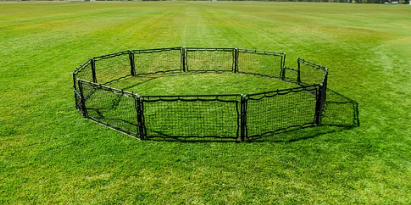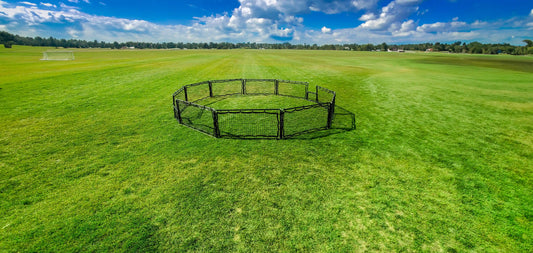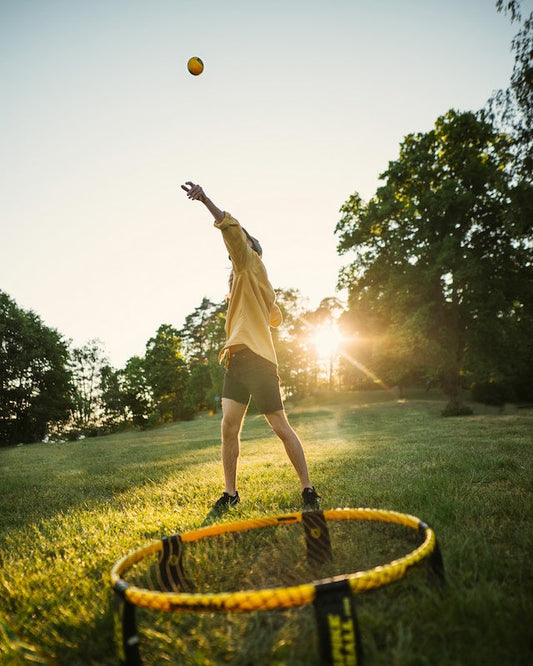What Is an Icebreaker?
Icebreakers help groups of kids to feel comfortable without pushing anyone too far out of their comfort zones.
An icebreaker is a game or activity that helps make participants feel more at ease.
How much does a polar bear weigh? Enough to break the ice.
When a new group gets together, some of the new group members could feel awkward. The reason why they feel awkward is that they’re unfamiliar with the people around them. Although this isn’t necessarily a sign of social anxiety, the group leader should take steps to ensure each person feels comfortable.
When working with children, it’s important to give the kids a way to get to know each other. Young children rely heavily on social approval. If a young kid feels isolated, they could develop social anxiety later in life, always worrying that they won’t be accepted in a new group of people. Introducing icebreakers to a group of kids allows the children to get to know one another without the pressure of introducing each person multiple times.
An icebreaker game is a small game that focuses on introductions. These games rarely have a clear winner or loser and instead give the kids a chance to learn names, get to know each other's likes and dislikes, and feel comfortable in a new group setting.
Icebreakers don’t have to be complicated, long, or intricate. In fact, some of the best icebreaker activities are simple team building activities that show the group how to work together. By the end of the icebreaker game, the kids should feel unified and be able to identify at least one new friend.

When Should You Use Icebreakers?
Use icebreakers to introduce a group.
Icebreakers won’t work for every time you meet with a group of people, especially for children. Because icebreakers are meant to introduce a group of people, the best time to use them is for the first and second meetings. Here are the best times to use icebreakers:
- Birthday party for young kids
- Youth group
- First day of summer camp
- First-day classroom activity
- Boys and Girls Club
Some icebreaker games can be used during other times, such as throughout the school year. When icebreakers aren’t specifically about learning names, feel free to use them at any point.
Ten Best IceBreakers For Kids Under 14-Years-Old
Finding good icebreakers can be difficult. To help, here are the ten best icebreakers for young kids.
1. Two Truths and a Lie
One of the most popular games among young kids is Two Truths and a Lie. The game is simple and requires no extra materials to play. If available, you can have paper and a pen for each player, but it’s not required for the game. To play Two Truths and a Lie, hand out a paper and pen to each player. Have each kid write down two true things about themselves and one thing that is a lie. An example of this would be:
- I love dogs.
- I’ve never been to Disneyland. (Lie)
- I grew up in Minnesota.
Once each kid has thought of three things and written them down, pick a kid to start. The child will read off their three things, trying not to reveal which one is the lie. The other kids will try to guess which one of the three is the lie. Everyone will decide, and then the child will reveal the lie and tell stories about the two true things. Then, move onto the next child.
Another version of this game is Two Lies and a Truth. The game is played the same way, except with two lies and only one truth. The kids will try to guess the true thing instead of guessing the lie. Both versions of the game are interesting and introduce the entire group of kids.

2. Tell a Story Together
A great way for the kids to connect creativity is by telling a story together. You will need no materials to do this. Sit in a circle with the kids facing each other and start a story. Going in order around the circle, each kid will say another sentence or two of the story. The story should go around and around the circle until everyone agrees that the story should end. Starting the story will be the hardest part. To help you get the story started, here are several starter sentences:
- There are only three of us left – the only three left alive in the world.
- I was sitting in my room, staring at the mirror in front of me, when suddenly wings grew from my shoulders and back.
- She walked out of her front door to see a note sitting on the doorstep. It said, “Don’t look in the garage.”
- When I woke up, I realized I forgot that today was the biggest test of the year, and I haven’t studied.
- He looked out the window and saw a unicorn flying over his neighbor’s house.
- I knew that it wasn’t a dream. Somehow, I could breathe water.
After the story is started, there’s no telling where it could go. Each person contributes a new line to the story, which means that several different minds are working together to build a world. Because each person has to start where the previous person left off, the group learns to work together.
This game is great to play because there’s no competition. Young kids can play this with or without adult supervision because few things could go wrong--they’re simply telling a story together. As the story progresses, the kids will begin feeling more comfortable with one another and feel a kinship form.
3. Question Ball Toss
To play Question Ball Toss, you will only need one ball, or plush toy, or something else that can be easily tossed from one kid to another without injury. Before tossing the ball to a child, ask a question, such as, “What’s your favorite color?” As the child catches the ball, they answer the question. Before tossing the ball to a new person, the child asks another question, and the kid who catches the ball answers the question. This creates a cycle of questions and answers, allowing all the participants to learn more about everyone else in the circle. Most of the questions asked should be icebreaker questions. However, after a few rounds, the children can ask something other than an icebreaker question. To make the game more interesting, begin asking Would You Rather questions such as, “Would you rather fly or breathe underwater?”
Some great ideas for questions are:
- What’s your name?
- What’s your favorite color?
- What’s your favorite food?
- What’s your favorite animal?
- Do you like cats or dogs better?
- What’s your least favorite food?
- If you could go anywhere, where would you go?
- If you were a character from your favorite movie, who would you be?
- Who’s your favorite Disney princess?
- What’s your favorite book?
- What’s your least favorite smell?
This game's questions should be light-hearted and fun, allowing the kids to learn more about each other without starting arguments. For example, stay far away from political questions or controversial questions.
4. Board Games
One of the best icebreaker activities is a board game. Board games let the kids come together and compete in a non-competitive way. Some of the best board games for kids include:
- Apples to Apples
- Pictionary
- Candy Land
- Twister
- Exploding Kittens
- Acorn Soup
- Operation
- Battleship
There are always new games coming out, meaning that there is nearly an endless collection of games for the kids to play. When gathering a group of kids together, ask kids to bring a game to the meeting. Then, let the kids decide which game looks the most interesting. You can play multiple games with the kids, switching the game every round to make sure that there’s never a boring moment.
Board games encourage kids to use their creativity and learn new skills. Some games, like Operation, help kids to develop fine motor movements. As the kids play Operation, they have to hold their hands steady. If their hands are too shaky, they could lose their round. Playing this game helps kids learn to keep their hands steady and could even help define their future interests. Board games are great icebreakers because they help kids to get to know one another without pressure.

5. Book About Me
Book About Me is less of a game and more of a group activity. This icebreaker activity helps the kids to learn more about each other while also encroaching art skills and creativity. Additionally, this game can be played with any group of kids. As long as the kids know how to use their imagination, they can participate in this activity. If the kids are still learning how to write, they may need adult help. Teachers could consider using Book About Me as one of their classroom icebreakers at the beginning of the school year.
For this activity, you will need paper and things for the kids to color and draw with. Tell each child to create a book about their life, using their imagination. Be careful not to give too much instruction to avoid interfering with their creativity. Once each child has finished their Book About Me, have a presentation time where each kid stands up and reads their book to the class or group. You can also pass the books around the class and have the kids read silently, depending on the room's energy.
If your class is struggling with creating the book, you can also have prompts for every few pages. For example, start with when the kids were born. On the next page, have the tell write about their favorite memory. Creates small prompts on every few pages to keep the kids engaged in their stories. As the adult leader, the specifics of the project are flexible. You can decide whether you want the stories to be prompted or imaginative.

6. I Love…
To play the game I Love… gather the kids in a circle of chairs. Start with one person standing in the middle of the circle. That person will say, “I love… people with brown hair.” Everyone with brown hair who is standing in the circle must leave their place and switch spots. The person in the middle will try to steal one of the temporarily empty chairs. The new person left standing walks to the middle, and the round starts again. They say, “I love… people wearing red shirts.” Again, the people wearing red shirts have to stand and switch seats while the middle person tries to steal one of the chairs.
This game introduces the group because you learn more about the people you are playing with. It helps the group bond while playing a fun game. This is also an easy game for young kids to play because it’s similar to musical chairs. It can be played at a birthday party, with a group of older kids, or with kids as young as a kindergarten class.

7. Sports Game
A great icebreaker game is to simply play a sports game. There are so many sports ideas that double as the perfect icebreaker activity. Some of the best games for icebreakers include:
- Volleyball
- Nine Square
- Soccer
- Kickball
- Four Square
- Capture the Flag
- Freeze Tag
- Gaga Ball
When playing sports games, it’s easy for kids to make friends. They will naturally be drawn to those who have similar play styles and to those playing on their same team. Without much interaction from a parent or adult figure, kids will automatically begin making friends.
Playing sports together also encourages the kids to bond over physical activity. It also encourages the kids to be outside and helps the kids form healthy habits together. Playing sports is one of the best ways to encourage natural friendships.

8. Name Bingo
Name Bingo is an easy game to play as long as the kids are old enough to read and write. To play the game, print out a Name Bingo paper card for each person playing the game. The game's goal is to get a blackout on the card by getting a name in every square. To get a name is a square, the person has to find someone who fits the description in one of the squares. For example, if one of the squares says, “Has more than two siblings,” you have to find someone with more than two siblings. Once you find that person, ask for their name and write their name on that square. The game continues until everyone has filled their paper with names.
This game is great to play in large groups because it forces everyone to introduce themselves to one another. Each person must talk to a dozen other people and ask them a variety of questions to figure out which box they fit into. This game ensures that everyone begins talking to one another.
Name Bingo is one of the games that can be played on the first day a group meets. It’s the perfect game for the first day in the classroom or the first day in summer camp. This game focuses on learning names and introducing everyone to everyone else. After the first day, this game isn’t always the best choice for an icebreaker. If you want to play Name Bingo, play it on the first day.

9. Ice Breaker
One of the best icebreaker games is Ice Breaker. Ice Breaker is a competitive game where the group is split into two or more teams. It encourages the teams to work together to earn the lead. This game is best for outdoor, summer events. To play Ice Breaker, you will need to prepare the day before the game to get all the materials ready. First, gather some generic clean articles of clothing, including socks, shirts, shorts, and sweaters. Then, submerge the items in separate tubs of water and place the water in a freezer overnight. The entire bucket of water needs to freeze, creating several different ice blocks of clothing. There should be enough clothing so that each player participating will get to put on one article of clothing.
Give the ice to each of the teams and then distribute different items to break the ice. Of course, based on the age of the players, distribute the right type of tools. For example, give a child’s plastic shovel to kids younger than eight. Have the kids try to break apart the ice to get the clothing out of the ice blocks. Once all of the clothing is out, the team can put the clothing on. Each player should wear at least one piece of clothes. The first team to wear all of the clothing wins.
This game is hilarious to watch and fun to participate in. Kids will love this game, especially when playing outside in the hot summer sun. Putting on wet clothes will be funny and difficult. This is one of the best games for icebreakers because it gets the kids laughing together.

10. Choose a Side
Choose a Side is a great game for kids who are old enough to form opinions. Middle school kids will enjoy playing Choose a Side. To play, have all of the kids line up in the middle of the room. Then, ask a question and designate either side of the room as the answer. For example, you could ask, “Do you like cats or dogs?” Then, tell the kids that the right side of the room is for those who pick cats, and the left side is for those who pick dogs. Continue to icebreaker activity with different questions.
This activity is a great way for kids to learn about their own opinions and know that other kids have different opinions. Each participant has to choose for themselves which side of the room to go to. Of course, there’s no right answer, which encourages the kids to make choices based on their personal feelings. Young kids tend to believe that everyone thinks the same. They assume that because they love mint chocolate chip ice cream that everyone else also loves mint chocolate chip ice cream. This group game teaches young children that it’s okay to have a different opinion and that kids can think for themselves. Elementary students can use this game to learn how everyone thinks differently. If you’re playing with older children, this activity can be used to challenge their beliefs.

Bonus Icebreakers for Virtual Meetings
If you’re meeting virtually instead of in-person, ice breakers can help the conversation flow more freely. Here are five bonus activities that work best for virtual meetings.
1. Show and Tell
With everyone’s cameras pulled up and recording, ask each participant to bring a Show and Tell item. The item should be something from their room. One by one, let the kids introduce their objects and talk about why the object is important to them. This activity is perfect because it lets the children hold the spotlight individually for a short period of time, allowing them to be seen and known by everyone in the meeting.

2. Never Have I Ever
Never Have I Ever is a popular party game for young kids. However, because it’s played sitting, it can be easily moved to a virtual setting. To play Never Have I Ever, have everyone hold up their hands with their fingers splayed. Then, start by saying, “Never have I ever… [insert something you’ve never done].” Everyone who has done the activity puts a finger down. The next person in the meeting then does the same thing, saying, “Never have I ever [insert something they’ve never done].” The game goes around until there’s one person left with a finger still up.
The game is fun because it shows what people have in common. For example, a person could say, “Never have I ever been out of the country.” When someone puts a finger down, it means that they have been out of the country, which sparks future conversations about that person’s travels. This game encourages conversation and includes everyone at the same time, making it a perfect remote icebreaker.

3. Would You Rather
Would You Rather is a fun way to start a class of older students or younger students. It can also be played with a large group or small group, making it a versatile icebreaker idea. The rules are incredibly simple. To play, prepare a list of Would You Rather questions. Some good Would You Rather questions include:
- Would you rather have a magic carpet that flies or your own personal robot?
- Would you rather have one eye in the middle of your head or two noses?
- Would you rather eat donuts or candy?
- Would you rather lick a dirty trash can or the bathroom floor?
- Would you rather live in the clouds or live underground?
- Would you rather breathe underwater or visit space?
- Would you rather never have to sleep again or never have to eat?
- Would you rather eat a whole jar of mayonnaise or drink a cup of hot sauce?
- Would you rather have a pet panda or a pet giraffe?
- Would you rather talk to animals or know every language?
- Would you rather be stranded on the moon or stranded on a deserted island?
Would You Rather questions are meant to be silly, abstract, and spark conversations. You can adapt the questions to meet the age of the group participating. It’s a fun icebreaker for every age group.

4. Pictionary
Playing Pictionary over a Zoom call is a great idea that will introduce the participants to one another and get everyone laughing and having fun. To play, either use a drawing app and screen sharing to draw directly on your computer or use a piece of paper or sticky note. Split the group into two teams and then choose one person from each team to start. Give them a prompt to draw. The first team to guess the prompt wins. You could also play without teams, making it a more individual game. To play without teams, simply elect one person to draw and have everyone else try to guess the picture before a timer is up.

5. Embarrassing Moments
One of the fastest ways to bond a group is to show and tell embarrassing stories. Everyone has been embarrassed at one point in their lives, and it’s something that many people bond over. Sharing embarrassing stories shows that you’re vulnerable and that you’re willing to open up to the people around you.
Have each person in the Zoom call share one of their most embarrassing moments. Each person should have three to five minutes to tell a story where they felt embarrassed. They can also share an embarrassing photo if they would prefer. Of course, when doing this activity, read the room to make sure the activity won’t cause someone lasting discomfort. Also, make it clear that everyone has an embarrassing moment and warn against bullying.
For more kid icebreakers, check out Castle Sports.







